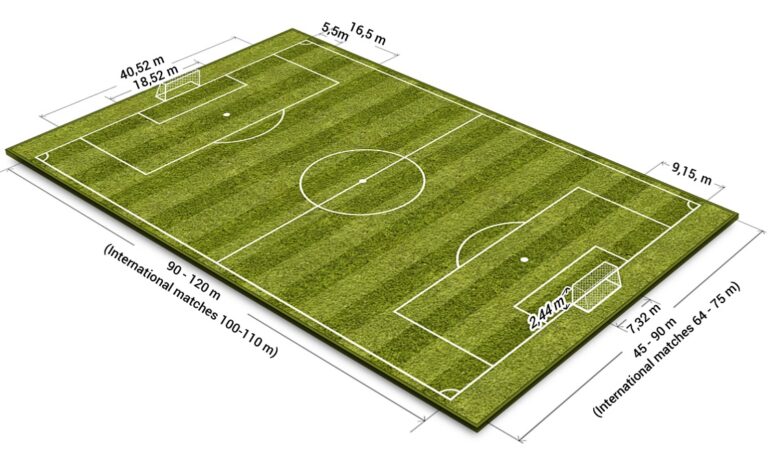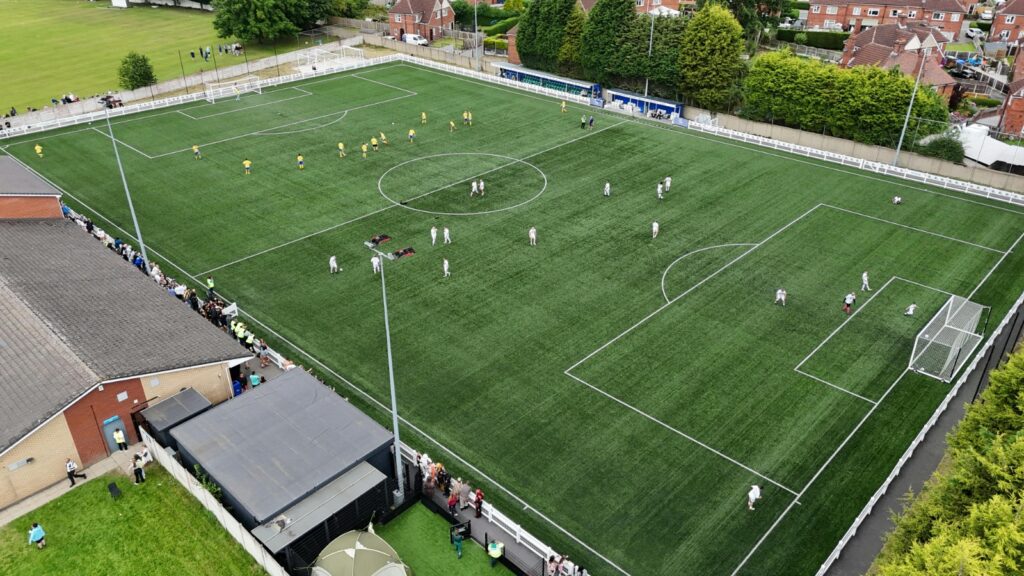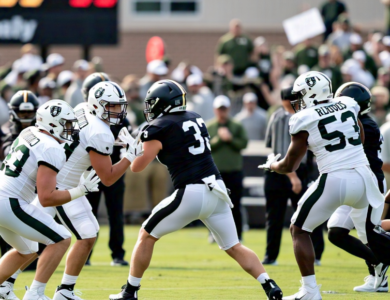
Table of Contents
When you’re curious about how long is a soccer field, it’s important to know that the size can vary depending on the level of play. Whether it’s a youth soccer match or a professional game, each field follows specific guidelines set by governing bodies. A standard soccer field for international play can be quite large, while youth fields are designed to be smaller to accommodate younger players. Understanding the typical measurements of a soccer field can help you better appreciate the layout of the game, whether you’re playing, coaching, or just watching your favorite team.
In general, the length of a soccer field ranges from 100 to 130 yards, and the width can vary from 50 to 100 yards. This variation depends on the age group, level of play, and the stadium hosting the game. For example, youth soccer fields are smaller, while professional fields have the largest dimensions. Let’s dive deeper into the official dimensions to give you a clearer picture of what to expect when it comes to the size of a soccer field.
How Long is a Soccer Field for Professional Matches?
For professional matches, the standard length of a soccer field is between 100 and 130 yards. The width typically falls between 50 and 100 yards, depending on the specific stadium and the governing body’s requirements. These measurements ensure that players have enough space to showcase their skills and play the game at a high level.
In general, a professional soccer field for international matches has a length of around 110 to 120 yards. This size allows for a balanced game, providing enough room for both offense and defense strategies to unfold. It’s important to note that these dimensions are the ideal size for top-tier competitions like the World Cup or the Champions League.
Each stadium must follow these measurements, but slight variations may exist, especially in different countries. However, soccer’s global rules help ensure that these fields remain close to the official guidelines.
How Long is a Soccer Field for Youth Soccer?

Youth soccer fields are smaller compared to professional ones because younger players need less space to play. For example, 4v4 fields for young children ages 6 to 8 usually have a length between 25 and 35 yards, and the width can range from 15 to 25 yards. These smaller dimensions help young players learn the basic skills of the game without being overwhelmed by a large field.
As the players grow older, the field dimensions expand. For 7v7 games, usually for children aged 9 to 10, the field measures between 55 and 65 yards in length and 35 to 45 yards in width. The dimensions keep increasing as children advance to 9v9 games, and the size can range from 70 to 80 yards in length and 45 to 55 yards in width.
These adjustments allow the young players to develop their skills at a pace that matches their abilities and physical size. The goal is to provide the right balance between challenge and enjoyment for kids.
What Are the Standard Length and Width of a Soccer Field?
The length and width of a soccer field are important because they define how the game is played. For official international matches, the length should be between 110 and 120 yards, and the width should be between 70 and 80 yards. This size is used for top-tier games, ensuring that both teams have enough room to maneuver.
For national competitions, the field dimensions may slightly vary but should still stay within these general ranges. Youth fields, as mentioned, are smaller, and the dimensions depend on the age group. For example, for U6 to U8 games, the field length is 25-35 yards, while older youth players, like U11 to U12, play on fields that are 70-80 yards in length.
The official standards help ensure that games are fair and played under similar conditions, regardless of where the match is held.
How Long is a Soccer Field for College and High School Matches?

College Soccer Field Dimensions
For college soccer, the field dimensions are regulated by the NCAA. A typical college soccer field is between 115 and 120 yards long and 70 to 75 yards wide. These dimensions are similar to professional soccer fields and provide enough space for competitive play.
High School Soccer Field Dimensions
In high school soccer, the field dimensions are similar to professional standards. The length ranges from 100 to 130 yards, while the width is between 50 to 100 yards. This size gives students a great platform to develop their skills as they prepare for higher levels of competition.
Both college and high school soccer fields use the same goal sizes as professional matches, which are 8 yards wide and 8 feet tall.
Conclusion
In conclusion, understanding how long a soccer field is helps us appreciate the game more. From professional matches to youth games, the field size varies to suit the players. Professional soccer fields are large, allowing for fast and exciting games, while youth fields are smaller so that younger players can learn the basics of the sport.
No matter the size, the important thing is that the field provides a fair and fun environment for everyone. Whether you’re playing or watching, knowing the field’s dimensions helps you enjoy the game even more. Soccer is all about teamwork, skill, and passion, no matter where it’s played.
FAQ
Q: How long is a soccer field for professional games?
A: A professional soccer field is typically between 100 and 130 yards long and 50 to 100 yards wide.
Q: How long is a soccer field for youth games?
A: Youth soccer fields vary depending on the age group. For younger players, like those playing 4v4, the field is usually between 25 to 35 yards long.
Q: How long is a soccer field for high school soccer?
A: High school soccer fields are usually between 100 and 130 yards long and 50 to 100 yards wide.
Q: How big is a soccer field for college competitions?
A: College soccer fields are typically between 115 and 120 yards long and 70 to 75 yards wide.
Q: Why do soccer field sizes differ for different age groups?
A: Soccer field sizes change to match the players’ age and skill level, making the game easier and more enjoyable for younger players.



